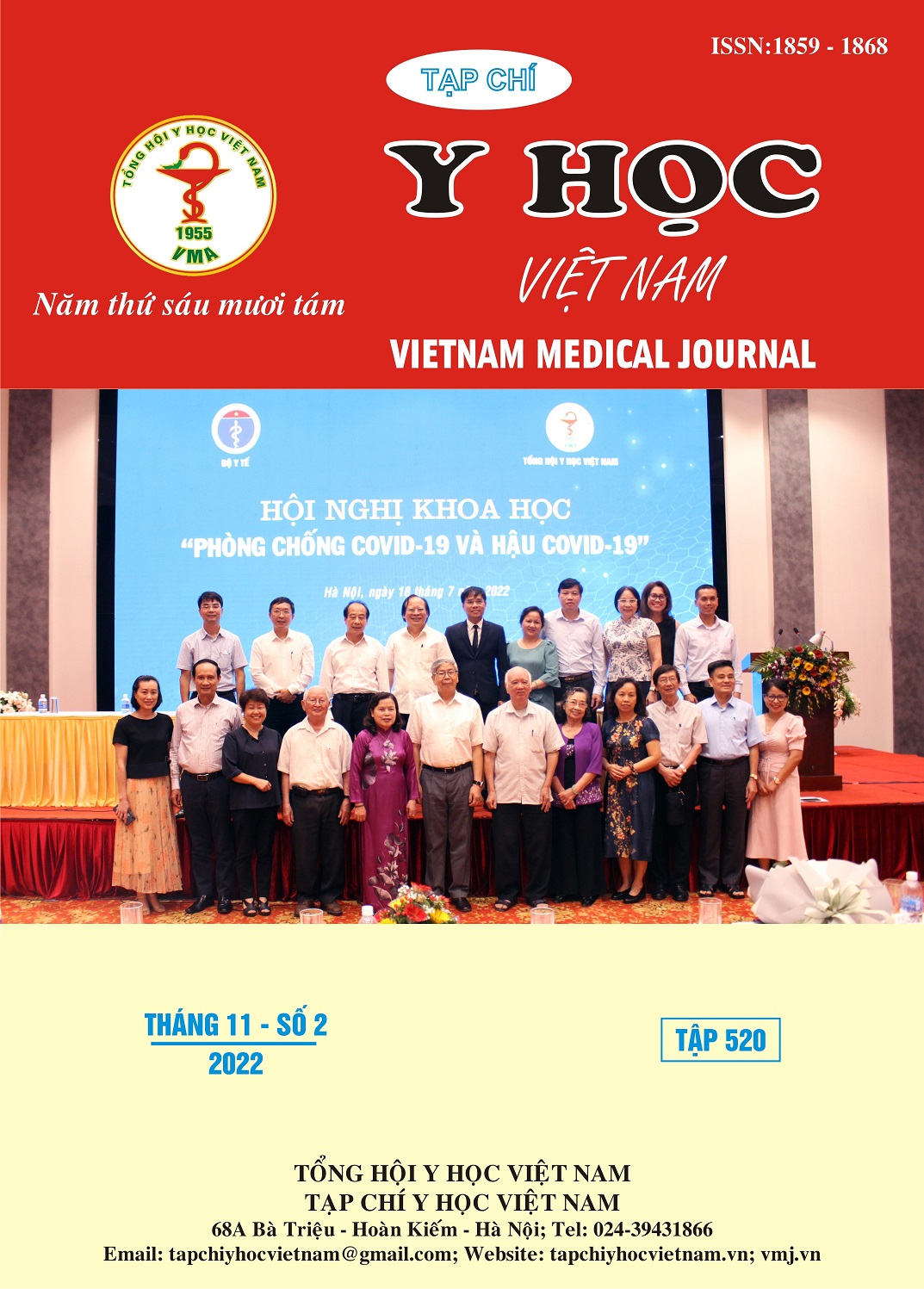NGHIÊN CỨU GIÁ TRỊ CỦA CỘNG HƯỞNG TỪ TUYẾN VÚ 1.5 TESLA VỚI QUY TRÌNH RÚT GỌN TRONG CHẨN ĐOÁN U TUYẾN VÚ
Nội dung chính của bài viết
Tóm tắt
Mục tiêu: Đánh giá vai trò của cộng hưởng từ tuyến vú 1.5 Tesla với quy trình rút gọn trong chẩn đoán ung thư tuyến vú. Đối tượng và phương pháp: Nghiên cứu được tiến hành tại Bệnh viện K từ tháng 1/2019 đến tháng 10/2022, trên 82 bệnh nhân nghi ngờ ung thư tuyến vú, được chụp CHT 1.5 Tesla tuyến vú đúng kỹ thuật theo hai quy trình đầy đủ và rút gọn(lồng ghép), có kết quả mô bệnh học sau sinh thiết kim và/hoặc sau phẫu thuật. Hình ảnh CHT được phân theo 2 nhóm quy trình đầy đủ và quy trình rút gọn, được mã hóa và làm mù thông tin người bệnh. Kết quả được đoc độc lập bới các bác sĩ chuyên khoa có kinh nghiệm. Quy trình rút gọn thực hiện trong nghiên cứu bao gồm chuỗi xung STIR axial và T1FS axial ở các thời điểm trước tiêm, sau tiêm 1 phút và 2 phút. Phân tích đặc điểm hình ảnh và giá trị của 2 phương pháp có đối chiếu với mô bệnh học. Kết quả: Trong 82 bệnh nhân nghi ngờ ung thư tuyến vú phát hiện 92 tổn thương, trong đó 51 trường hợp ung thư và 41 trường hợp tổn thương lành tính. Tỷ lệ phát hiện được tổn thương trên CHT với quy trình rút gọn so với quy trình đầy đủ là 97.8%. 02 trường hợp không quan sát thấy trên CHT với quy trình rút gọn, chiếm tỷ lệ 2.2%, được xếp loại BI-RADS 3 trên CHT với quy trình đầy đủ, có kết quả giải phẫu bệnh đều là tổn thương lành tính. Mặt khác, khi so sánh khả năng phân loại tổn thương tuyến vú theo BI-RADS trên CHT với quy trình rút gọn so với quy trình đầy đủ cho thấy độ tương hợp ở mức rất tốt (Kappa = 0.866). Phân loại BI-RADS ≥4 trong chẩn đoán ung thư vú trên CHT với quy trình rút gọn cho giá trị chẩn đoán đúng là 81.5%, độ nhạy độ đặc hiệu lần lượt là 100% và 55.8%. Kết luận: Cộng hưởng từ tuyến vú với quy trình rút gọn là một phương pháp có giá trị cao trong chẩn đoán ung thư tuyến vú, có độ nhạy, giá trị chẩn đoán đúng tương đương với CHT với quy trình đầy đủ.
Chi tiết bài viết
Từ khóa
Cộng hưởng từ tuyến vú, quy trình rút gọn, ung thư tuyến vú.
Tài liệu tham khảo
2. Kuhl CK, Schrading S, Strobel K, Schild HH, Hilgers RD, Bieling HB (2014). Abbreviated breast magnetic resonance imaging (MRI): first postcontrast subtracted images and maximum-intensity projection-a novel approach to breast cancer screening with MRI. Journal of clinical oncology : official journal of the American Society of Clinical Oncology, 32(22):2304-10.
3. Mann RM, van Zelst JCM, Vreemann S, Mus RDM (2019). Is Ultrafast or Abbreviated Breast MRI Ready for Prime Time? Current Breast Cancer Reports, 11(1):9-16.
4. Sung H, Ferlay J, Siegel RL, et al (2021). Global Cancer Statistics 2020: GLOBOCAN Estimates of Incidence and Mortality Worldwide for 36 Cancers in 185 Countries. CA: a cancer journal for clinicians, 71(3):209-249.
5. Strahle DA, Pathak DR, Sierra A, Saha S, Strahle C, Devisetty K (2017). Systematic development of an abbreviated protocol for screening breast magnetic resonance imaging. Breast cancer research and treatment, 162(2):283-295.
6. Mango VL, Morris EA, David Dershaw D, et al (2015). Abbreviated protocol for breast MRI: are multiple sequences needed for cancer detection? Eur J Radiol, 84(1):65-70.
7. Moschetta M, Telegrafo M, Rella L, Stabile Ianora AA, Angelelli G (2016). Abbreviated Combined MR Protocol: A New Faster Strategy for Characterizing Breast Lesions. Clinical breast cancer, 16(3):207-11.


